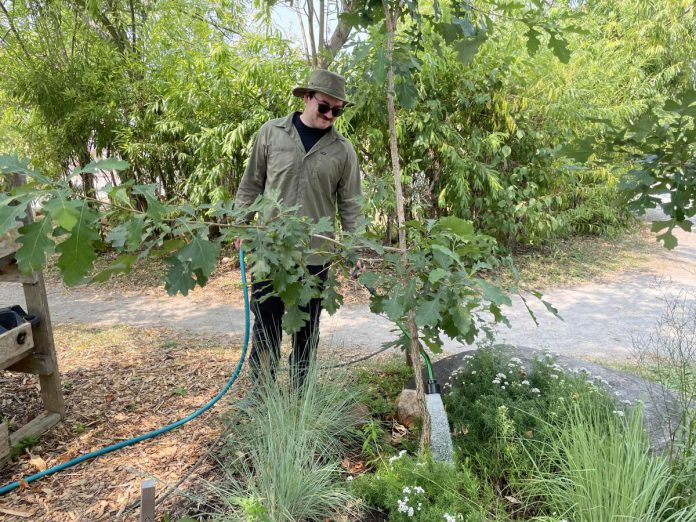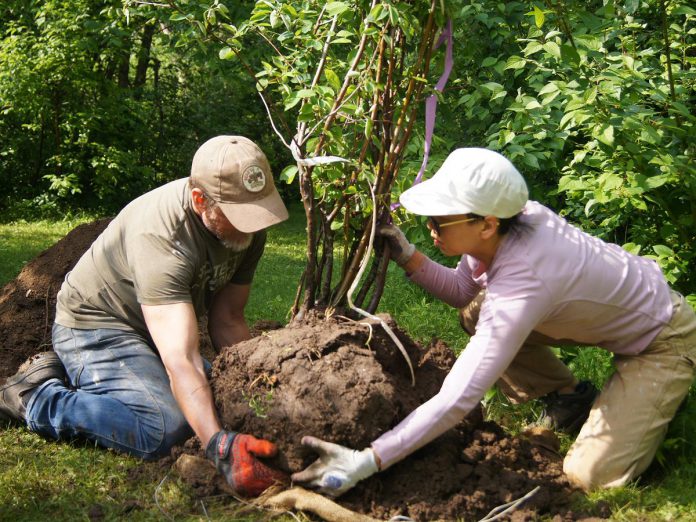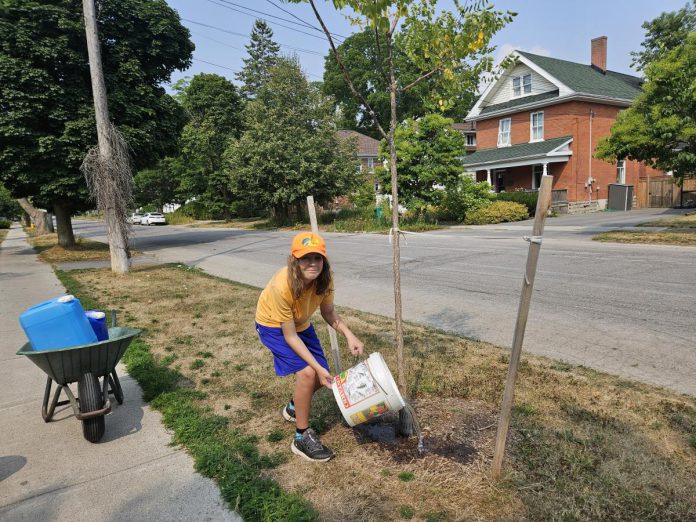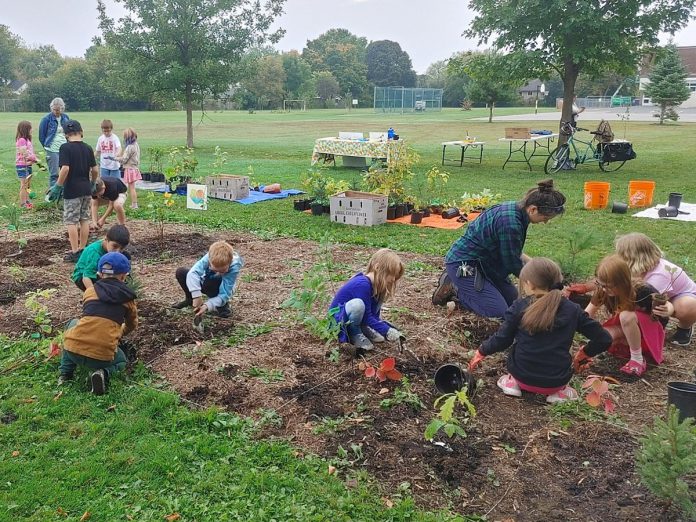
Trees are a natural air conditioner, shading homes, businesses, parks, and trails from the heat of the sun, helping to keep temperatures down during heat waves. In built-up areas like the City of Peterborough, trees counteract the urban heat island effect, where concrete and asphalt surfaces absorb heat, making it hotter than natural areas.
Normally trees follow an organic cycle, whereby older trees die off and are replaced with young saplings. In natural areas, young trees come up on their own, while in built-up areas, they are usually planted.
Between the derecho three years ago, the ice storm earlier this year, and the emerald ash borer, a substantial number of mature trees have been lost in the Peterborough region in a very short period of time.
The loss of mature trees is concerning and has not gone unnoticed. Tree planting is taking place on both public and private properties to replace these majestic beauties.
The City of Peterborough, for example, has an Urban Forest Strategic Plan and is working to replace each tree lost to the emerald ash borer. Ensuring that these young trees grow into mature trees is important for counteracting hot summers, one of the many benefits of trees.
This summer has been unusually hot and dry, creating problems for young trees. The average temperature in July was 21.3°C, compared to the normal of 19.7°C. Peterborough received just 10 millimetres of rain last month, according to data from the Trent University weather station. As of early August, no rainfall has been recorded.

Young trees are especially vulnerable to the combined effects of heat and low precipitation. Their growth and survival depend on having enough water during periods of high temperatures.
With such a hot, dry summer unfolding, many trees and shrubs planted in the last three to five years are showing signs of heat stress such as wilting leaves, scorched leaf edges, and a sparse-looking canopy.
Most cities in Ontario do not water trees beyond the first year, but this summer is no average year in the Peterborough area. Young trees need water. A community of people willing and able to help could make a big difference to their survival rate.
Whether watering young trees at home, or pitching in to help water trees in a boulevard, park, or apartment building, there are a few important tips to consider.
The goal of watering is to keep the soil moist without oversaturating or letting it get too dry. They need to be watered slowly to ensure the water penetrates deep into the soil.
A light rain is not enough to help young trees that are struggling, yet watering every day can suffocate root systems and create opportunities for rot and disease to develop. Be sure to water only two to three times per week in hot, dry weather.

Here is some further guidance on how to water trees and shrubs effectively.
Identify the root zone
The roots of a tree, especially the water-absorbing ones, are primarily in the top 60 cm (2 feet) of soil and extend beyond the drip line, the area under the tree’s canopy. Avoid watering directly at the trunk, as it can lead to root rot.
Choose a watering method
Bucket or watering can: water slowly using two to three buckets or watering cans per tree.
Soaker hose: Lay the hose in a circle around the tree, under the canopy drip line and turn it on for an hour.
Garden hose: Turn the hose to a slow trickle and move it around the drip line for an hour or more. The bigger the tree, the more water it needs.
Consider mulching
Mulch helps retain soil moisture, regulate temperature, and suppress weed and grass growth. Many grasses survive by releasing chemicals from their roots which inhibit the growth of trees.
Apply an eight-centimetre (three inch) layer of organic mulch (like wood chips or bark) extending at least to the drip line, keeping it away from the trunk.
Other important notes
Water in the morning or evening to minimize evaporation.
Continue watering into the fall, especially newly planted trees, to help them prepare for winter.
Avoid synthetic fertilizers and manure around newly planted trees. Fertilizers rich in nitrogen will encourage top growth which could spell doom for trees which are stressed and need strong root systems first.

To help a young tree survive this weather, consider adopting one for watering near home or work that is wilting, has lost leaves, or has scorched leaf edges.
GreenUP is inviting community volunteers to help care for young plants and trees recently installed in partnership with local schools.
To tend to the plants at St. John Catholic Elementary School at 4 p.m. on Monday (August 18), register at SJSchoolyardBlitz25.eventbrite.ca. To help at Keith Wightman Public School at 10 a.m. on Wednesday, August 27, register at KWSchoolyardBlitz25.eventbrite.ca.


























